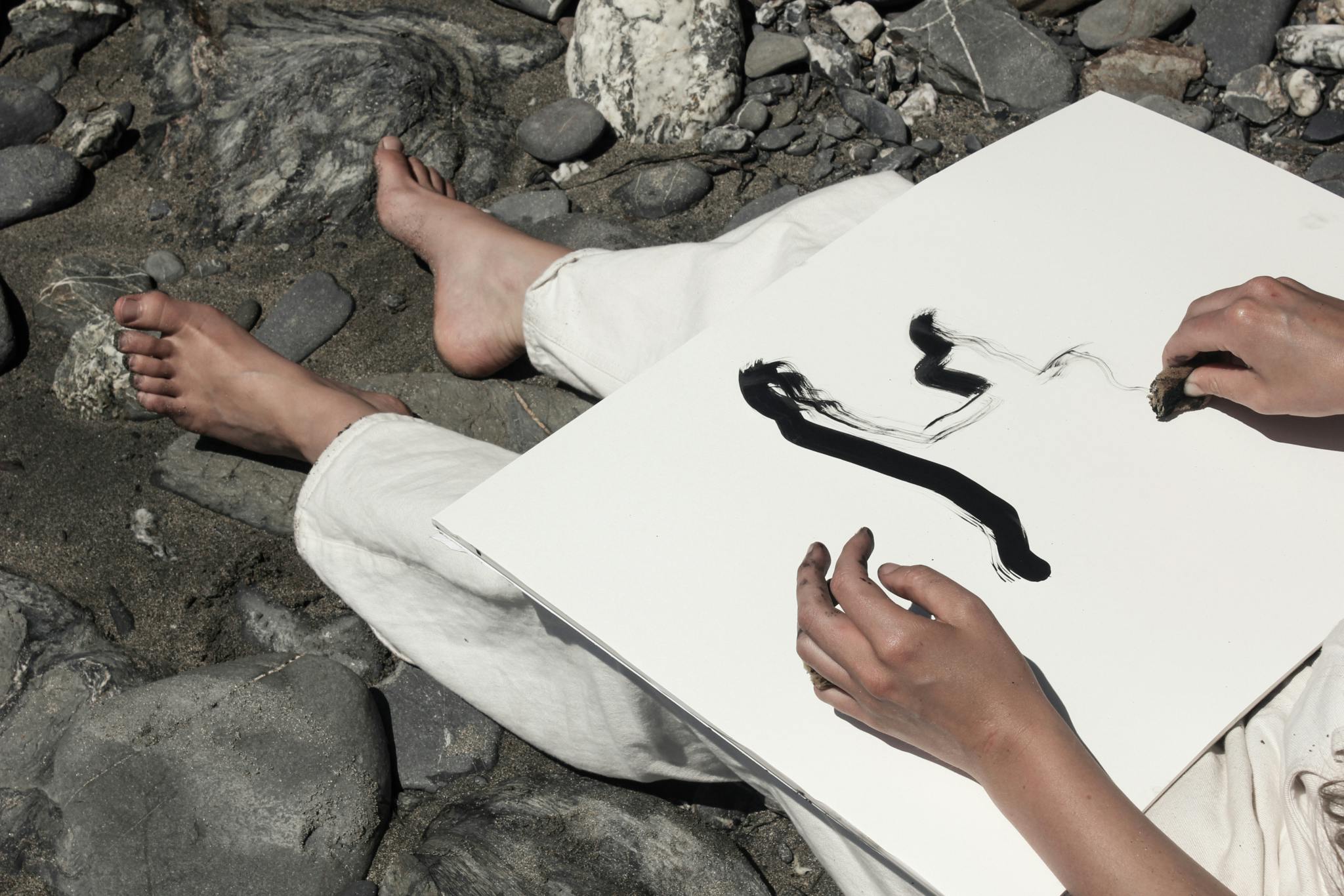MA Textile Design
Metamorphosis by Becky Dodman, MA Textile Design
MUKTA by Inuta Ulme, MA Textile Design
Form by Erin Dale, MA Textile Design
Untitled by Abigail Lamacraft, MA Textile Design
Tasseography Textiles Investigates how divination and tea leaf reading can be used as a generative participatory design method to produce textile designs.
Becky introduces a newly created set of tools that facilitates the development of a shared language between herself as the designer and her participants. The Process gives participants the space to embrace the lesser-known aspects of themselves, removing preconceptions of what they may like designed for them, to design with them, encouraging them to explore an infinite number of ideas through a set of stimuli. In so doing Becky focuses less on the illustrative, representational self, and more on the abstract part of ourselves.
Becky, explores how divination has been; and is used as a visualisation, narration and interpretation method to create a sense of ‘self’ and future self. Becky invites her participants to consider the idea of future, community, togetherness, spirit and future now. She manifests these tasseography interactions through bespoke textile artworks that celebrate individual’s pleasure colours and shapes. The aim, to create authentic, bespoke abstract textile art works.
MA student and designer Essi Peuhkuri dedicated her research project to reshaping perceptions surrounding fashion consumption and branding. Encouraging reflective dialogue, Essi created an alternative fashion platform and online store titled ‘CAREFREE’, Essi is looking to turn the traditional experience of online shopping inside out.
By removing product imagery and replacing it with the items’ care labels, Essi is setting product care, quality and origin as the key focus of the selection process. By basing her ‘CAREFREE’ concept on care labels, Essi is fighting the 'image over consumption' of fast fashion by raising awareness of value and care.
Historically, scenes of domesticity depicting women and their making are well-documented. Kemp's work explores the wellbeing that manifests from this making. Present scenes of domesticity would be radically different; Kemp questions whether, in this millennia of digital hustle and bustle, where Generation X are isolated and mental health issues abound, we must create a space and place for women to gather and 'make' together, to restore equilibrium. From this involvement emerges new work, together with women's collaboration in the 'making'.
Alongside the scenes of making sits a fireside chair, upholstered in a designed and digitally-printed fabric created by Kemp. She hopes this comfortable item will help viewers question the common narrative entitled, 'who tells you who you are before you know yourself?' This mixed media narrative piece brings together various threads and themes that Kemp has been exploring throughout her MA journey. It includes her school reports from 5-16 years old, memories, song titles and favourite words.
This chair embodies the desire to just sit and be mindful, a favourite chair for making craft and a safe space. The handmade objects are Kemp's response to her research and the art of making to ensure her own physical, social and emotional wellbeing.
